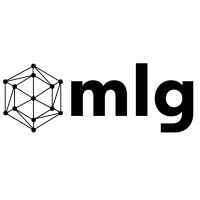|
|
|
Security |
|
|
|
|
Data is only shared between parties involved in the transaction, verifiers, and permissioned observers. This allows an extra layer of security from traditional DLT where the data is spread throughout the network.

|
Similar security models to Hyperledger Fabric, but also incorporates the IBM Cloud Services as an added security layer when using the platform.

For more information:
http://hyperledgerdocs.readthedocs.io/en/latest/security_model.html
|
Public Blockchain with security features built in.
Lamport digital signature algorithm. Claims to be resistant to quantum computer attacks.
Customized P2P network with data storage encryption, location transparency, source nontraceability
Merkle Patricia Trie data structure

Although the hash algorithm built into Bitcoin and Ethereum is secure with todays technology from brute force attacks, quantum computing may support enough computational power to compromise these algorithm.
|
|
|
|
Permissioned

|
Permissioned

|
Permissionless

|
|
|
|
Privacy concerns are addressed through the pluggable uniqueness services, and restriction of viewing transactions.

|
Private channels

Fabric has a unique concept of channels that supports transaction privacy. Private channels are restricted messaging paths that can be used to provide transaction privacy and confidentiality for specific subsets of network members.
|
Based on zero knowledge proof. Hides the send, receipt address and transfer amount.

Similar in function to the zk-SNARK feature Ethereum added during their Metropolis release.
|
|
|
|
Algorithms |
|
|
|
|
Notaries - Pluggable Framework, Validity consensus and Uniqueness consensus

transaction validity and transaction uniqueness.
https://docs.corda.net/key-concepts-consensus.html
Corda uses special Notary Nodes to reach consensus. Notaries are nodes that specifically address double spend attempts.
|
Plugable consensus (PBFT)

Fabric’s notion of consensus is broad and encompasses the whole transaction flow, starting from proposing a transaction to the network to committing it to the ledger. It uses the plugable Byzantine fault tolerance (PBFT) algorythm
|
Fast Paxos PoS variant.
The consensus of TRON adopts a three-step strategy.

1. Kafka-based technology system: implement a centralized consensus algorithm.
2. Raft-based distributed consensus mechanism: realize the centralized and distributed leapfrogging. Improves network function/distribution and lays the foundation for distribution with no logical center.
3. Consensus mechanism of Proof of Stake and realize the Byzantine Fault Tolerant Consensus.
|
|
|
|
Efficiency |
|
|
|
|
Fast

Built for financial applications
|
Varies

Depends on implementation
|
Moderate

|
|
|
Block Confirmation Time
Details
|
TBD

|
Varies

Depends on implementation
|
Fast

|
|
|
|
Development |
|
|
|
Proprietary Codebase
Details
|
Open Source

|
Hyperledger Fabric is open source. IBM Blockchain is a proprietary layer that sits on top of Hyperledger as a simple to use platform accessing the blockchain

|
Open source but goverened by the TRON organization

Built on Ethereum, but planning to move to own main net in June 2018
|
|
|
|
General |
|
|
|
Blockchain / DLT type
Details
|
Not a blockchain. Uses DLT to create transaction efficiencies between permissioned parties rather than the same ledger for the entire network, which R3 Corda believes is inefficient.

https://vimeo.com/205410473
|
Federated / Consortium, Permissioned Network

Federated Blockchains operate under the leadership of a group. As opposed to public Blockchains, they don’t allow any person with access to the Internet to participate in the process of verifying transactions. Federated Blockchains are faster (higher scalability) and provide more transaction privacy - important aspects for Enterprise focused deployments.
Based on the Hyperledger Fabric framework.
|
Public

Open source public blockchain fuelled by cryptocurrency.
|
|
|
|
Less focus on modularity

Focus is on financial applications, but may support more use cases in the future.
|
Plug + Play Architecture
Easy to operate software platform to build out use case, test, and implement

https://www.ibm.com/blockchain/platform/
|
Similar to Ethereum:
Generic, with DApp and Smart Contract support for wider applications

It is not modularity that stands out but the provision of a generic platform suitable for various types of transactions and applications
|
|
|
|
Corda focuses on scaling through reducing inefficiencies in consensus mechanisms. By limiting involvement to just the transacting parties, beneficiaries, and verifiers it aims to position itself as more scalable than PoW

performance considerations https://www.corda.net/2017/12/dlt-performance-considerations/
|
Supports 1000 TPS. Designed for high throughput business applications. Scales relative to Hyperledger Fabric new developments.

|
Currently supports 15 TPS as it is on the Ethereum platform. Will be able to support up to 1000 TPS once main net launches

Scalability is a core feature for TRON. They want to be able to support large commercial projects, while minimizing transactions fees and time.
|
|
|
|
Varies

|
500 transactions per block

Same as Hyperledger Fabric
|
Varies

https://tronscan.org/#/blockchain/stats
|














